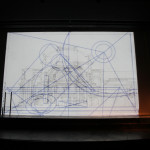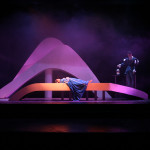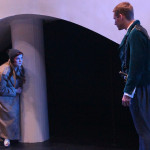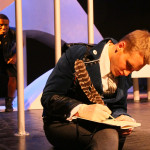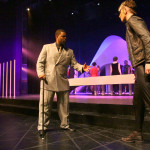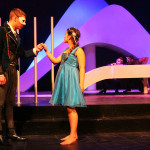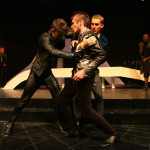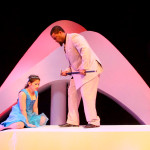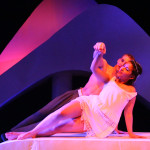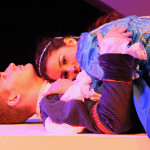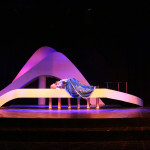Romeo ∞ Juliet: Redux
By William Shakespeare
Adapted by Charles M Pepiton
St. Lawrence University
April 2014
Production team:
Choreography – Kerri Canedy
Fight Choreography – Audrey McDowell
Movement Specialists – Magdalena Koza, Daniel Han & Alexandra Kazazou
Set Design – Todd Canedy
Costume Design – Selina French
Lighting Design – Nina Hylen
Sound Design – Terry Dubray
Stage Manager – Liz Foreman
- Studio Matejka Residency
- Prologue
- Juliet in the tomb
- Romeo enters the tomb
- First melee
- Romeo & Apothecary
- Romeo & Benvolio
- Lord Capulet at the dance
- Lord Capulet & Tybalt
- Romeo meets Juliet
- Tybalt kills Mercutio
- Lord Capulet & Juliet
- Romeo ∞ Juliet
- Romeo ∞ Juliet
Director’s Notes:
What do we know about Romeo and Juliet? Why bring them back? Two young lovers meet, fall for each other in an instant, marry, are torn apart by their warring families, and die together by their own hands so that the feud may end. I’m sorry to spoil it for you, but we’re told nearly that much in the prologue. Why then do we continue staging the play? Perhaps, as a friend replied when I put the same question to him, we want to have our hearts broken again. A good answer.
I’m curious about time and the way our classics change, or don’t change, given the progression of years, the repetition of history, and the unreliability of memory. I’m curious about how we inevitably read ourselves as we recall the classics and about how we resurrect our ancestors as we revisit and take apart their work. What does our particular point on the timeline help us to understand about this play that we haven’t already considered? Isn’t it arrogant to assume we have some new insight in the first place? In that case, what have we forgotten? As I was thinking through these questions, one thing became clear. I wanted to somehow unpack the play from our expectations, to disrupt our assumptions. All transformation implies disorder.
Romeo and Juliet die, but the play is not about their death. They love, but the play is not about their passion. If it were about either of these, I suspect we might not be told the entire plot in the first 14 lines of the play. Instead, I propose that Shakespeare’s play is about the transformative power of a choice, despite all evidence and warnings to the contrary, to fully connect with another, that simultaneously selfish and selfless act wherein strength is found in weakness. Juliet makes this choice as she utters the five lines that literary critic Harold Bloom calls “the most exalted declaration of romantic love in the language.” Her declaration is two moments in one.
This adaptation is about how such an event can be two very contradictory yet simultaneous moments. She lives as she dies. She heals as she kills. Einstein tells us, “…all our judgments in which time plays a part are always judgments of simultaneous events, ” but what if we experienced time not as a line but as a continuous sequential loop? Consider time instead as a Möbius strip with no clear beginning or ending. Time moves at once forward and backward, the past hovering just below the future. What if we were to allow this dawn song to shift itself back into phase?


